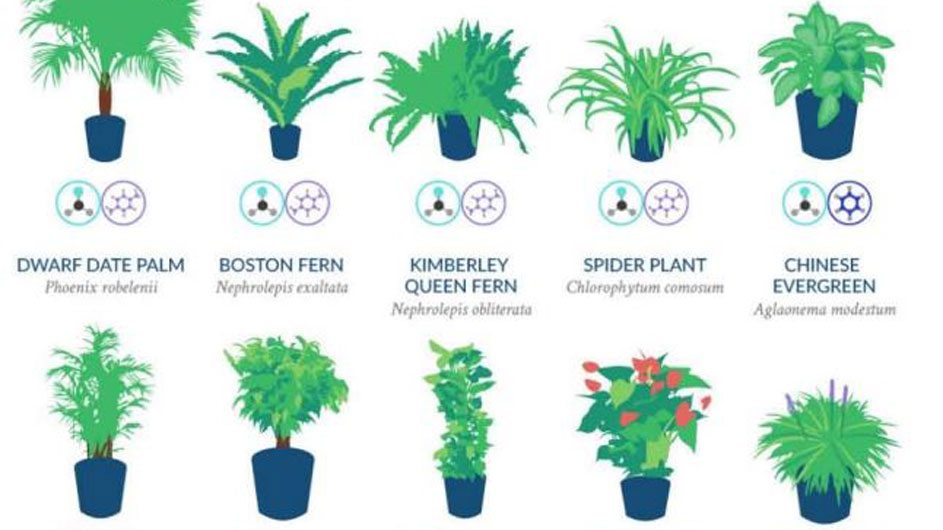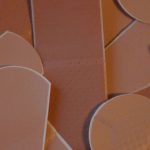
17 NASA Approved Houseplants That Can Make Your Family Healthier
Did you know having houseplants can keep your family healthier? According to NASA, there are 17 air cleaning super plants that can do amazing things for your home’s air quality and your family’s health.
What could be lurking in your home and why is it so bad?
There are five prominent chemicals you want to avoid that lurk in almost every home. These five bad boys are trichloroethylene, formaldehyde, benzene, xylene, and ammonia. The items in your home, and even what your home is made of can give off these toxic chemical gases. Due to the fact that your home is sealed tight, these toxic gases stay in your home and can build up in the air, causing you and your family to get sick.
- Trichloroethylene is found in paint, ink, varnishes and glues. Exposure is known to cause dizziness, headaches, nausea, vomiting, sleepiness, and even coma.
- Formaldehyde is lurking in paper sacks, waxed papers, paper products like towels and tissues, plywood paneling and synthetic fabrics. Exposure can cause nose, mouth and throat irritation, as well as swelling of the larynx and lungs.
- Benzene is found in things like cigarette smoke, glues, paint products, furniture wax, and is used in making plastics, resins, rubber lubricants and pesticides. Benzene can cause eye irritation, sleepiness, dizziness, a racing pulse, confusion and even loss of consciousness.
- Xylene is in leather products, paints, cigarette smoke, vehicle exhaust, rubber and the printing process. Xylene cause mouth and throat irritation, as well as headache, dizziness, confusion, heart problems, kidney damage, liver damage, and in some cases coma.
- Ammonia is commonly found in cleaners, waxes, fertilizer and smelling salts. Exposure to ammonia includes eye irritation, coughing and a sore throat.
What are these 17 super plants and what can they do for your home?
- Bamboo Palm – Filters formaldehyde and xylene from the air.
- Boston Fern – Filters formaldehyde and xylene from the air.
- Broadleaf Lady Palm – Filters formaldehyde, ammonia and xylene from the air.
- Chinese Evergreen – Filters benzene and xylene from the air.
- Cornstalk Dracaena – Filters formaldehyde, trichloroethylene and benzene from the air.
- Devil’s Ivy – Filters formaldehyde, benzene and xylene from the air.
- Dwarf Date Palm – Filters formaldehyde and xylene from the air.
- English Ivy – Filters formaldehyde, benzene, trichloroethylene and xylene from the air.
- Flamingo Lily – Filters formaldehyde, ammonia and xylene from the air.
- Florist’s Chrysanthemum – Filters formaldehyde, benzene, trichloroethylene, ammonia and xylene from the air.
- Kimberley Queen Fern – Filters formaldehyde and xylene from the air.
- Lilyturf – Filters trichloroethylene, ammonia and xylene from the air.
- Peace Lily – Filters formaldehyde, benzene, trichloroethylene, ammonia and xylene from the air.
- Red-Edged Dracaena – Filters formaldehyde, benzene, trichloroethylene and xylene from the air.
- Spider Plant – Filters formaldehyde and xylene from the air.
- Varigated Snake Plant – Filters formaldehyde, benzene, trichloroethylene and xylene from the air.
- Weeping Fig – Filters formaldehyde and xylene from the air.
What are some other benefits of having indoor plants?
Indoor plants come with a long list of health benefits for everyone in your home. They can reduce cold symptoms by as much as 40%, reduce the mold in your home’s air by as much as 60%, eliminate certain chemicals that suck the calcium out of your bones, reduce dust in your home by 20%, absorb the icky CO2 in the air and produce fresh clean oxygen.
Household plants also offer great mental benefits to the elderly. The University of Nevada Cooperative Extension did a study in which 18 elderly participants were given a plant and took an indoor plant class for four weeks. A year later the 18 participants were happier, healthier, and had fewer reported illnesses then those who participated but weren’t given a plant and the four week class.
A little advice for first time plant owners.
According to the experts, you need two large plants for every 12 square meters in your home. Place them in sunny areas around you home, such as window seals, with a tray under them to prevent water damage. Flowering plants will need extra sun and plants with darker leaves typically need less light. Plants collect dust, and all you need is to wipe their leaves with a damp paper towel to clean them off.
Also note that it’s best to underwater your plant rather than overwater. If you aren’t sure if your plant needs water, stick your finger in the dirt. If it feels dry and the potting soil does NOT stick to your finger, it needs water. If the soil feels damp and it STICKS to your finger, it doesn’t need water.
Do you have small children or pets in your home?
A word of warning though, some houseplants are toxic. If you have small children in your home, or pets, do a little research and choose one that is non-toxic when ingested. Kids and pets put things in their mouth daily, and it’s best to choose a non-toxic houseplant plant so you won’t have to worry about them getting sick if they decide the leaves look tasty.
Do you have a houseplant in your home? Do you think having plants in the home can keep your family healthier? If you have any tips to share please leave a comment. We love comments, and yours could help others!










